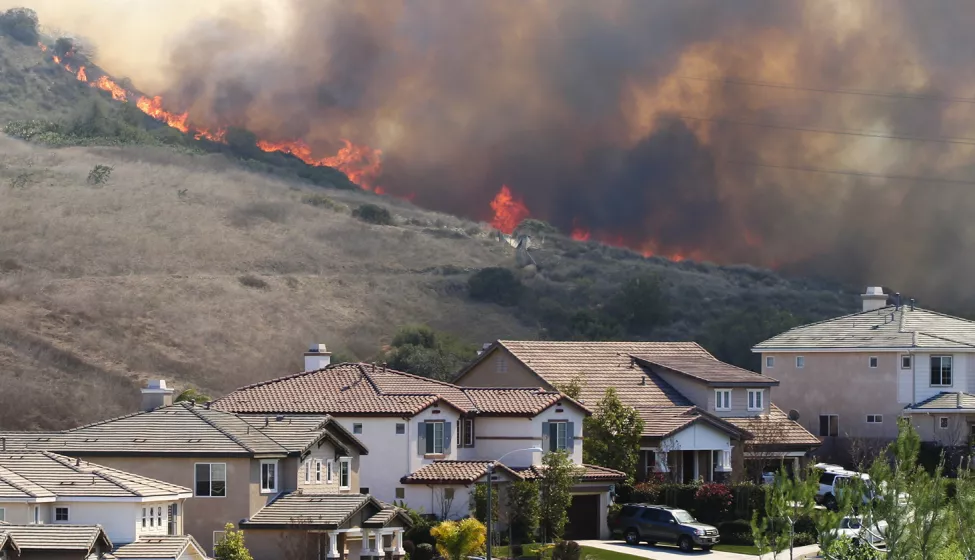December 5, 2019
The physical forces that occur during extreme weather events can place facilities at risk for multiple infrastructure failures, loss of operations and production, and major chemical releases, all of which directly affect a company's bottom line. Flooding associated with Hurricane Harvey in 2017 resulted in over 100 such failures and chemical releases along the Houston shipping channel.
Current building codes and standards provide guidance against flooding based on past historical floods. However, weather is non-stationary, and past storms are no longer representative of present or future storms. Not only are sea levels gradually rising around the U.S., but tropical storms are bringing increased precipitation due to slowly rising ocean surface temperatures. As a result, we are seeing more flooding near shore due to storm surge and inland due to rain. Flooding that would historically occur only once in 100 years now occurs much more frequently. In fact, some of the worst tropical cyclone and hurricane damage in history have occurred in recent years.
We anticipate that future weather events will continue to grow in severity.
In response, meteorologists and civil, mechanical, electrical, and environmental engineers are partnering to identify vulnerabilities in existing industrial infrastructure. Together, they seek to better understand the limitations of the traditionally prescriptive approach to infrastructure risk management, the consequences of cascading failures associated with extreme weather events, and how a probabilistic approach to managing risk can help improve infrastructure and facility resiliency.
Limitations of a Prescriptive Approach to Risk Management
Traditionally, large facilities and infrastructure are designed and constructed according to prescriptive codes and standards that reference historical flooding maps issued by the Federal Emergency Management Agency. This prescriptive approach has two limitations.
First, because its guidance is based on what has happened in the past, it is no longer representative of today's circumstances. We know that current extreme weather events, specifically those associated with tropical cyclones and hurricanes, are increasingly severe. We anticipate that future weather events will continue to grow in severity.
Second, the prescriptive approach does not provide any framework to assess or rank risk. When a facility is designed according to prescriptive guidance, each individual element of the facility (e.g., flood wall, storage tank, transformer, electrical generator, electrical sub-station, etc.) is located in accordance with its respective guidance, which does not enable any understanding of future risk. Furthermore, if a protective element or piece of equipment fails (e.g., flood wall failure or power loss), it can be difficult to understand the related impact on other equipment or processes or the subsequent introduction of vulnerabilities throughout the facility.
Cascading Failures Associated with Extreme Weather Events
Cascading failures are common during extreme weather events due to the multiple interconnections between electrical, mechanical, and structural elements within an industrial facility. Three of the most critical cascading failures are the release of hazardous materials, loss of power, and business interruption.
The release of hazardous materials can occur when a failure of a flood wall, levy, or earthen berm causes a pipeline, pipe rack, or tank to fail. During Hurricane Harvey, approximately 100 facilities along the Houston shipping channel experienced a loss of containment of tanks and a release of hazardous materials on land, in the water, or in the air.
Loss of power can occur when operationally critical peripheral electrical equipment is flooded. In 2012, flooding from Superstorm Sandy caused the failure of low-voltage protective relays and dielectric fluid equipment at two transmission substations within the Con Edison East River/East 13th Street Complex and resulted in a loss of power at ten distribution networks. This darkened the lower half of Manhattan. When power is lost to a safety-critical piece of equipment, it can also result in the release of hazardous materials. Examples include loss of power to fans that keep volatile and hazardous vapors below threshold concentrations or systems that keep unstable chemicals cool.
Releases of hazardous materials or loss of power can lead directly to business interruption as a result of cascading infrastructure failures. If a facility loses power or experiences a failure of a critical piece of infrastructure, it may suffer from loss of operations, production, and ultimately, revenue.
Improving Resiliency with a Probabilistic Approach
Designers can manage the risk of extreme weather events and help minimize the risk of cascading infrastructure failures by using a probabilistic framework that incorporates the interconnections between critical infrastructural elements. This framework must first be driven by an ability to predict the likelihood of flooding on an hourly basis given current and developing weather conditions. The system fragility then identifies vulnerable systems at different levels of flooding (structural, mechanical, electrical, underground or above ground tanks, pipelines, etc.) and cascading failure scenarios. By understanding the likelihood of potential failure scenarios and quantifying the magnitude of their impact, facility owners can manage and mitigate against them.
For example, a probabilistic approach may have better enabled owners of facilities in the Houston shipping channel to understand the conditional probability of a tank failure given that protective structures against flooding had failed. This may have informed preventive measures such as a shift in infrastructure placement, thereby minimizing the risk of tank failure and costly hazardous material releases.
How Exponent Can Help
Exponent's multidisciplinary team of engineers and environmental experts understands mechanical systems, infrastructural installations, and the consequences of the release of hazardous materials. We partner with state-of-the-art leaders in weather modeling and perform probabilistic analyses to help facilities understand the interconnections of infrastructural elements and improve resiliency against extreme weather events.

